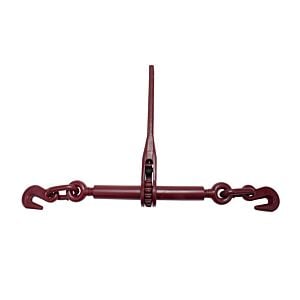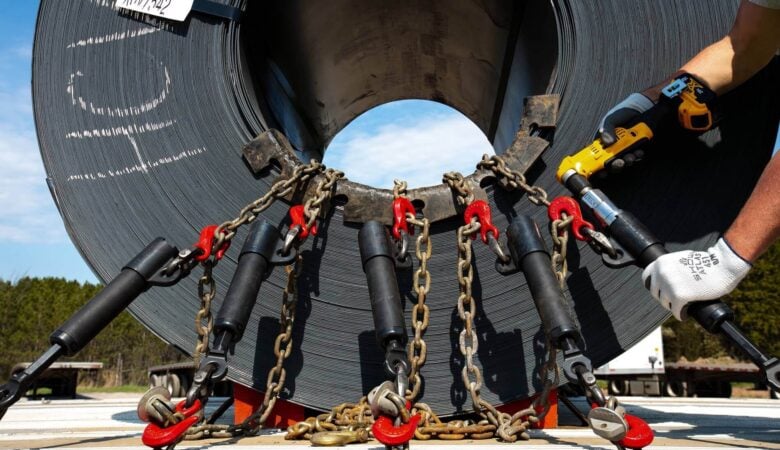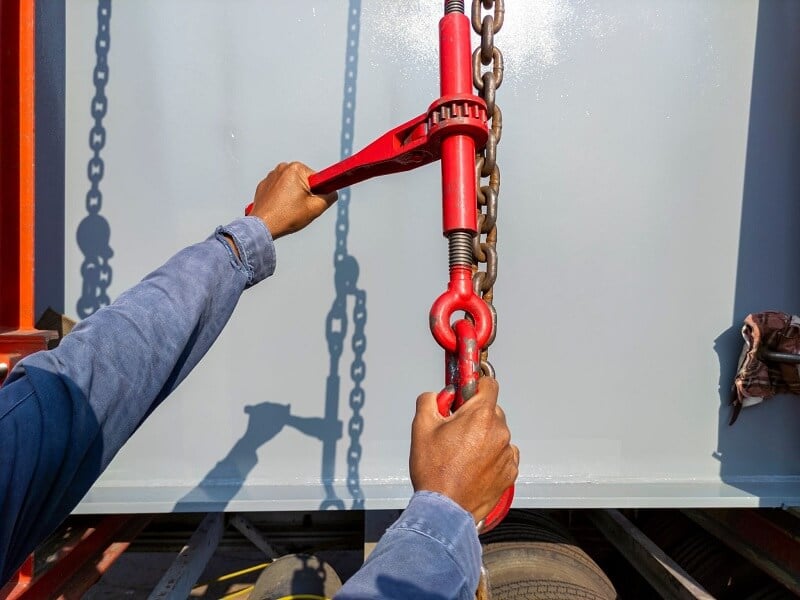As a flatbed hauler, you know just how important it is that your cargo is secured down safely and tight. For many truckers, transport chains are their go-to securement option. This makes load binders a necessity! However, some flatbedders may not know how to use chain binders properly and may be unaware that “chain binder” is an umbrella term!
There are different types of chain binders that work best for specific flatbeds or cargo, which means choosing the end fittings for your binders or chains is incredibly important! You want to make sure your transport chains and chain binders are compatible. Chain binders are very strong and durable and come in a variety of styles and load ratings to ensure you find a binder that will match the type of cargo chain you use. However, the installation of chains and usage of binders is the same regardless of the size!
How to Attach the Chain with Binder
A question frequently asked by new flatbed haulers unfamiliar working with chains is how to use chain binders and how to use chain tie-downs. The first step will always be properly attaching the chain(s), which we explain below:
How to Use Chain Tie-Downs:
Step 1:
You’ll want to look over your flatbed trailer and find the best location to attach your chain. Depending on the type of trailer you own or work with, some will have built-in D-rings and anchor points while others will need the chain to be connected to the frame or rail. Another option for trailers that lack built-in anchor points is purchasing temporary tie-down points, like E-tracks or D-rings you can uninstall and move easily! We carry options for flexible anchor points at Mytee Products!
Step 2:
With your chain(s) attached to your trailer, load and position your cargo to make sure your chains will properly reach and secure the load. You may discover that your anchor points do not completely reach your cargo, which means your chains may not fit properly over it. Take the extra time to reposition your cargo or find new anchor points so you will be able to secure your cargo safely!
Step 3:
With your cargo and anchor points in place, locate the best places to attach and position your chain! When hauling vehicles and heavy machinery/loads, the best way to safely secure your cargo will be looping the chain over the heaviest framework available! You don’t want to risk damaging the cargo by placing a heavy chain over weak areas. Additionally, in the event of a sharp turn or hard stop, a heavy framework will be able to absorb the tension the chain may cause whereas weaker sections could bend, tear, or break under the stress.
Step 4:
With everything properly in place, it’s now time to attach the chain! First, hook the chain to your trailer’s anchor points. Then bring the other end through or over your load. You want to try and make the chains as tight as possible during this process. If the chain isn’t as tight as you need it or you find there’s still a lot of slack, that is where chain binders come in…
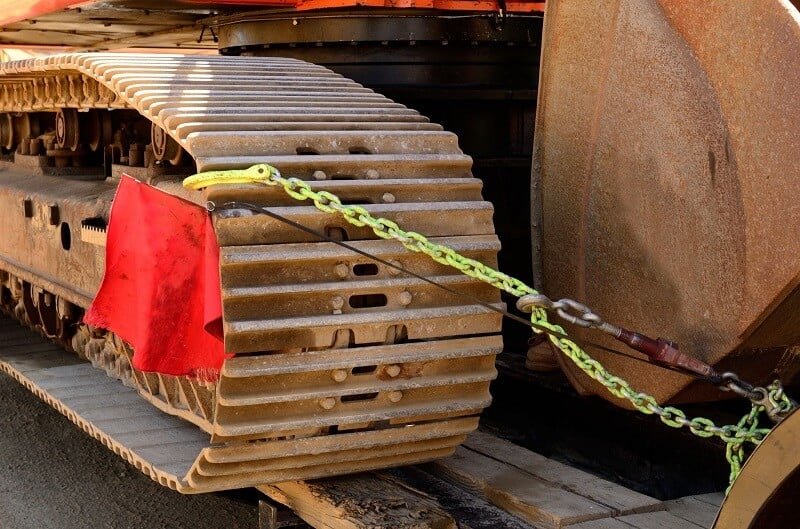
How to Bind the Load Using Chain Binder
When it comes to asking how to use a load binder, some flatbed haulers would follow it up with “how to use a lever chain binder” and “how to use ratchet binders.” In reality, there is little difference in how to bind a load with a ratchet chain binder or lever chain binder. We will get further into the differences between the two, but let’s discuss how to use a chain binder in a step-by-step process:
- Open Chain Binder
Open your chain binder to its full extension, and hook your chain to the tension hooks on the binder.

- Setting the Hook and Anchor Points
Hook one end near the cargo you’re securing and hook the other end to the same chain near the anchor point; try to attach the chain as tightly as possible.

- Tighten the Chain
Pull the lever down to tighten the chain and adjust as needed to get the proper security needed to keep your cargo secure.

- Check the Achhachment
If the chain still feels loose after you tighten it, try repositioning the binder’s attachment and try again. But, if the binder is as tight as you can get it, loosen the attachment point by a link or two and try again.
- Wrap and Finish
Wrap any excess chain around the binder and secure the chain so it doesn’t risk bumping into the cargo during transportation.

Tie-Down Laws and Rules to Consider When Using Load Binders
Like with most trucking equipment, there are rules and regulations flatbedders need to consider when using load binders. As per FMCSA rules, cargo that weighs 10,000 lbs or more is required to be tied down and secured at a minimum of four corners. Knowing this, it then makes sense that you are required to have at least four anchor point tie-downs and four tightening devices. This means that if you are planning to deliver cargo that weighs 10,000 lbs or more, you will need at least four load binders for proper and legal securement.
Even if you aren’t delivering cargo quite that heavy, the length of your loads also fall under specific rules. For cargo 5’ or less, you are only required to have one tie-down IF the cargo is more than 1,100 lbs. If your cargo is over 5’ in length, then you will need at least two tie-downs – which of course extends to two anchor points and two load binders.
Weight of a Chain Binder
Besides the question of “how to use a load binder,” another question frequently asked about these binders is their weight. The weight of a chain binder tends to be tied to its size, style, and brand. The larger a chain, the larger and heavier a binder that is needed! You need to prepare for the type of cargo you plan to haul, as that will dictate the chain size you need which then determines the type and size of load binder. However, the general weight of our Mytee Product’s chain binders is anywhere between 2 lbs to 22 lbs.
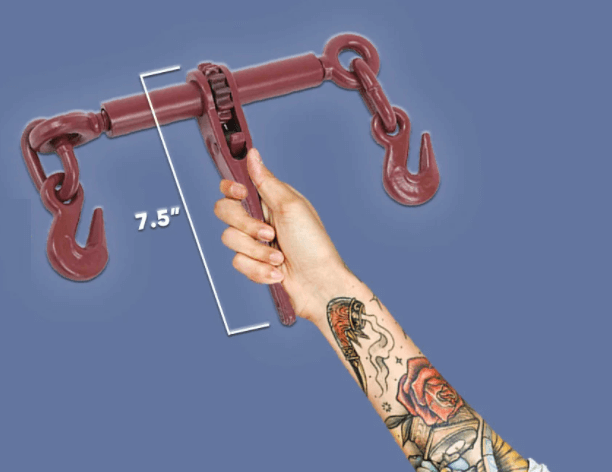
2 Types of Chain Binders
There are only two types of chain binders that you will see frequently on the market: lever and ratchet binders. While both get the job done and will tighten your chains over or through your cargo, there are differences that make some flatbedders swear by one style and disregard the other entirely. The main difference? How the binders tighten.
1. Lever Binder

Considered the easier of the two to use, lever binders have few moving parts which make maintenance and cleaning much easier! Compared to a ratchet chain binder, we are asked how to use a lever chain binder. A lever binder is designed to lock itself after the lever has been rotated a full 180 degrees. This chain binders store energy which makes the chance of recoil higher than a ratchet binder. Though the lever binder is easier to use, that doesn’t mean it’s the safer option.
2. Ratchet Binder

Designed with a gear, handle, pawl, and end-fittings, ratchet chain binders have a big mechanical advantage over lever binders. If you know how to use ratchet binders, then you know that these chain binders take some strain off of you at the expense of time. Ratchet chain binders typically take longer to use, which leads to a slower but steadier loading and unloading process. But, since their handles don’t store as much energy as a lever binder they are safer to use as the risk of recoil is nearly non-existent.
How To Inspect and Maintain Load Binders
Once you know how to use a load binder, the next step is knowing how to properly maintain them! In order to get a long lifespan out of them, an inspection of a load binder should take place prior to every use. Inspect for damage, cracks, distortion, or wear and tear. Distortion and cracks can be a sign of overloading or improper installation – this could mean your chain binders and chain tie-downs are not equal in terms of strength and you should consider upgrading your chain binder. If there is any damage or sign of wear in the connecting links, immediately stop using the chain or binder. For lever chain binders, be sure to inspect the yoke periodically for distortion.
Even if you’ve inspected your load binders and found no damages, your job doesn’t end there! You can help ensure your chain binders last long by reducing friction by routinely lubricating the pivot and swivel points – add the screw threads and pawl if working with a ratchet binder. Finally, when storing your chain binders keep them somewhere dry and chemical-free. To ensure they stay safe even from environmental damages, consider investing in a chain carrier or toolbox for your chains and load binders!
For flatbed haulers planning to use or currently using chain tie-downs, having load binders is a necessary tool for safely delivering your cargo! At Mytee Products, we not only have a variety of sizes, types, and brands for transport chain and load binders but we also have alternatives for anchor points for those trailers that lack an adequate amount of tie-down points! We hope this article helped you better understand how to use chain binders properly. Feel free to browse our website to find the trucking equipment for you! Haul safe and earn more with Mytee Products!
Also Read: Top 7 Chain Binders in the Flatbed Industry


